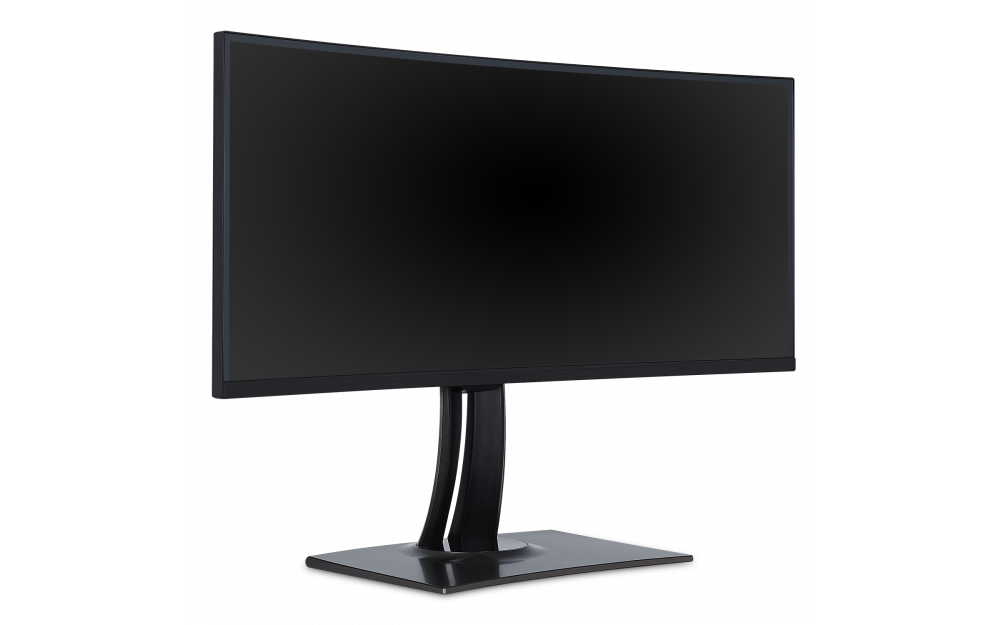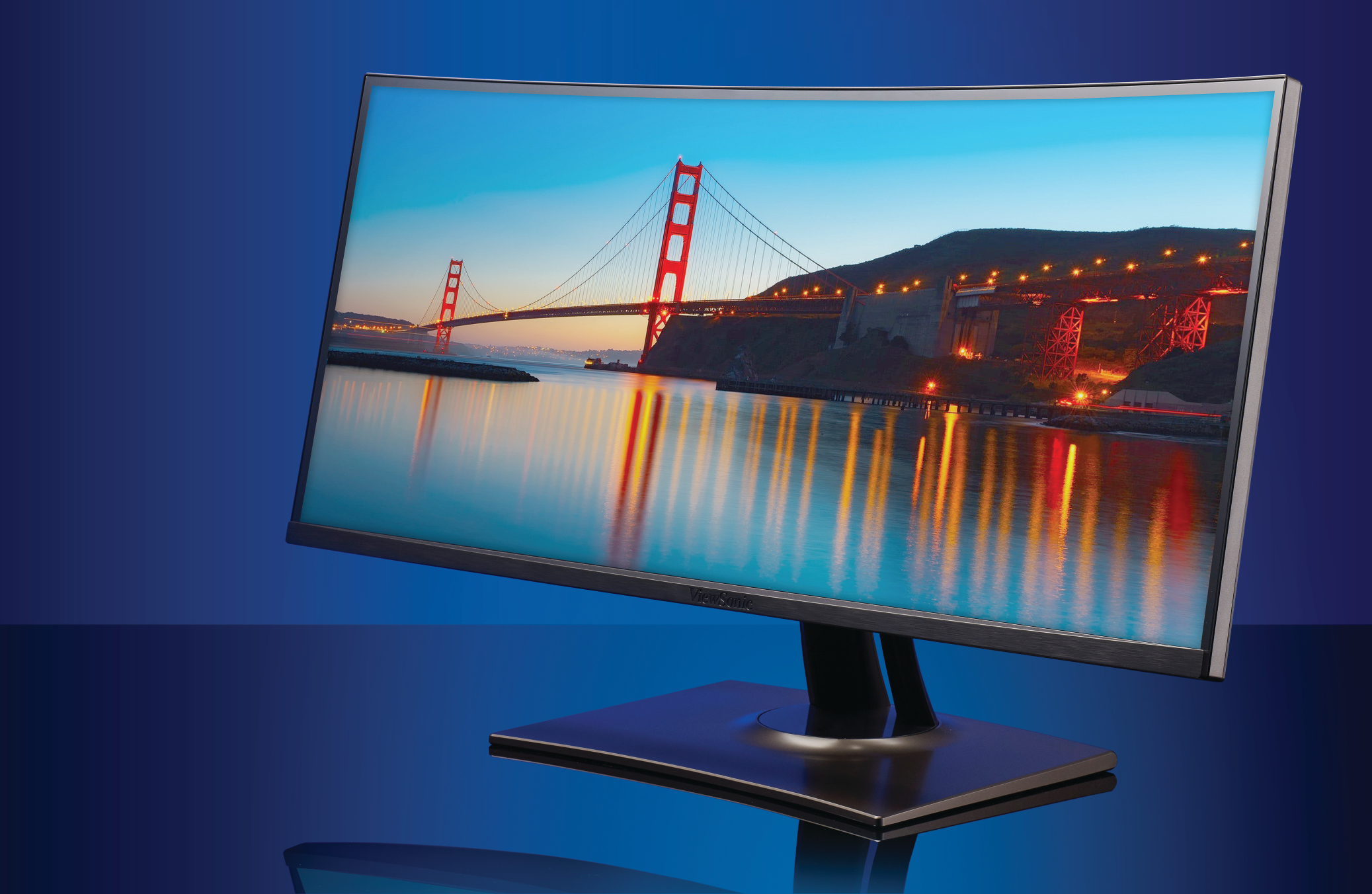Our Verdict
The VP3881 is noticeably more vibrant and saturated than the relatively disappointing LG 38UC99.
For
- Genuinely useful vertical resolution
- Better image quality than LG’s panel
Against
- Not as punchy as a true HDR panel
- Limited to 60Hz refresh
PC Gamer's got your back
Price: $1130
Panel Size: 37.5-inch
Native Resolution: 3840x1600
Pixel Density: 0.229mm
Panel Type: IPS
Maximum Refresh: 60Hz
Response: 7ms
Contrast: 1,000:1
Display Inputs: 2x HDMI 2.0, DisplayPort 1.2
Connectivity: 3x USB 3, 1x USB C, 3.5mm audio in and out
VESA Mount: 100 x 100mm
Warranty: Three years
Ever since the first 21:9-aspect monitor rolled out five or so years ago, the super-wide format has been about as polarizing as it gets with flat panels. Some loved it for its cinematic sizzle; others trash-talked the limited vertical resolution and consequently poor productivity proposition.
Each successive generation has upped the ante in terms of vertical resolution. ViewSonic’s latest cinematic screen salvo is the VP3881. It’s a 38-inch monster with no fewer than 1,600 vertical pixels. Thanks to that 21:9 aspect, the horizontal pixel count clocks in at 3,840. In other words, this is a 21:9 version of the 3840x2160 standard, also known as 4K or UHD.
However you slice it, the VP3881 packs a reasonable number of vertical pixels and, in turn, productivity chops for viewing docs. With this pixel grid, it’s practical to view multiple documents side by side. Depending on your vision and comfort levels, as many as four is viable.
Of course, the VP3881 is not entirely novel. Previously, we sampled the LG 38UC99. In many ways, the 38UC99 and this ViewSonic VP3881 are dead ringers. Both sport the same 38-inch (37.5-inch viewable) diagonal, 3840x1600 native res, and are based on IPS panel tech. What’s more, both screens have identical 2,300mm curvature radii, and equally offer native 8-bit color depth, with dithering up to 10-bit support. LG is one of the big players in the production of the panel itself, and we do indeed believe that it’s one and the same LG panel found in both monitors.
So it’s surprising to note that ViewSonic’s implementation is unambiguously superior. For starters, it offers slightly wider color spaces. For instance, LG claims 70 percent of the Adobe RGB gamut, while ViewSonic ups that to just over 75 percent. Even more significant, at first glance, is that ViewSonic is claiming HDR10 support. Dig deeper and you’ll find that refers to the ability to decode HDR10 video, rather than fully support HDR10 rendering; a glance at the spec sheet reveals a maximum brightness of 300cd/m2—nowhere near the thousands of nits needed for true HDR playback.

Looking for a monitor purpose-built for gaming? Check out our guide to the best gaming monitor, which has options in multiple sizes and prices.
All that said, the VP3881 is noticeably more vibrant and saturated than the relatively disappointing LG 38UC99. Black levels are also superior, with less evidence of the dreaded IPS glow that blights the LG. This is impressive, given the shared panel technology. ViewSonic has also bequeathed the VP3881 a high-quality enclosure and stand, among other features.
The former includes a stand with wide-angle swivel support and 100mm VESA compatibility, not to mention understated but sleek styling. Admittedly, the OSD menu controls on the rear of the enclosure come with a learning curve, but after boning up, you’ll find some useful features, including a wide range of color space presets—such as sRGB, EBU, SMPTE-C, Rec. 709, and DICOM-SIM—the ability to toggle input lag modes and multiple levels of pixel response, and much, much more.
As for out-of-the box calibration, it’s good to go for all but the most discerning pros. ViewSonic claims a Delta E below two for factory calibration, and all the scales and gradients look great to us, except for a little loss of detail in black tones. It ain’t cheap, and the pixel pitch is, ultimately, nothing special, but that’s an industry-wide issue for desktop screens.
This article was originally published in Maximum PC's June issue. For more quality articles about all things PC hardware, you can subscribe to Maximum PC now.
The VP3881 is noticeably more vibrant and saturated than the relatively disappointing LG 38UC99.

Jeremy has been writing about technology and PCs since the 90nm Netburst era (Google it!) and enjoys nothing more than a serious dissertation on the finer points of monitor input lag and overshoot followed by a forensic examination of advanced lithography. Or maybe he just likes machines that go “ping!” He also has a thing for tennis and cars.


